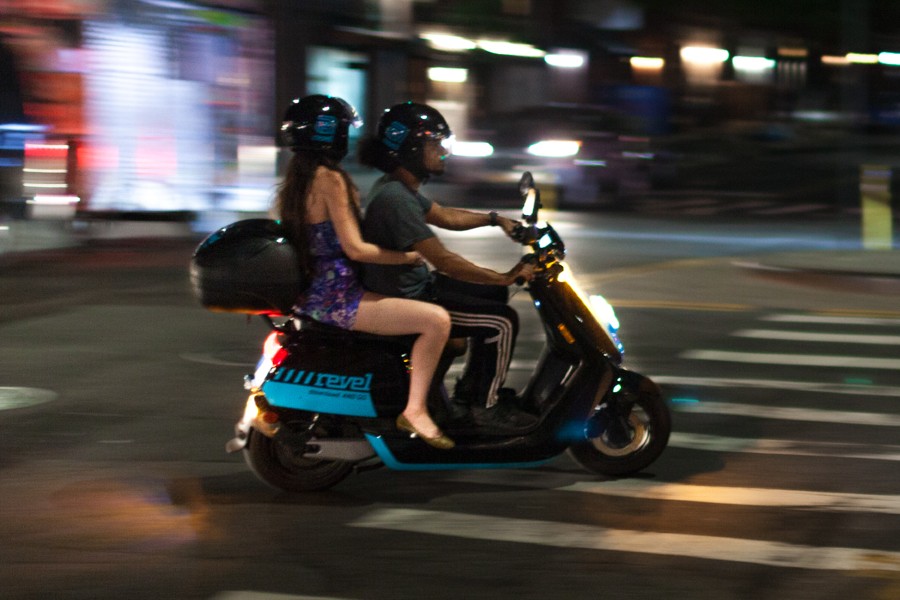Chabad teaches to care for the spiritual and material needs of all Jews, wherever they could be found. Chabad of Harlem suggest where Jews are heading as gentrification marches.
Perhaps it was only a matter of time.
In a city defined by runaway gentrification — Chabad has come to Harlem.
And the popular outreach group that sniffs out where Jews are migrating next has in recent years gained a foothold in Harlem, another fast-morphing neighborhood shedding its old skin.
On a recent night in late February, one story up from a street where neighborhood denizens once drank during the day and slept at night — or vice versa — a few hundred people socialized over sushi and kabobs and kosher wine. In the background, klezmer music played.
It was the inauguration of the Chabad Serving NYU on the Bowery.
A hundred-odd blocks north on another recent evening, across the street from a once-abandoned building where squatters lived until recent years and drug deals and muggings kept the sidewalks empty after dark, a few dozen people sat and sang and schmoozed for several hours. When they walked out later that night, they joined other people strolling outside, passing a brick-façade, doorman apartment building that has just risen across the street.
It was a Kabbalat Shabbat and Shabbat meal sponsored by Chabad of Harlem, on Manhattan Avenue at 118th Street.
The Chabad center inauguration, and the Shabbat service, in Manhattan neighborhoods that until recently had a negligible Jewish presence, are the latest signs of a deepening national trend. A growing number of young Jews here and across the country have, in the last decade, decamped to areas that traditionally had little Jewish — or middle-class — populations.
Maya Finch, an art historian who found herself being priced out of housing in Manhattan five years ago, was about “to give up” on the borough. Then she decided to look at Harlem. “I knew it wasn’t dangerous.” She moved here, and discovered “there are Jews in the neighborhood.”
Stereotypes of (the Bowery and) Harlem as places where one would fear to tread are hopelessly outdated, say the Jews who are fueling and leading the Jewish revivals there. As outdated, says Rabbi Shaya Gansbourg, a semi-retired printing executive who founded the Chabad of Harlem, as the perception of the West Side as a gang-filled outpost in the 1950s musical “West Side Story.”
Residents, men and women, say they feel safe traveling in and to the neighborhood at all times, and, raising children there.
The Harlem where Rabbi Gansbourg now leads a series of programs on Shabbat and during the week — with the assistance of his wife, Goldie, his son, Rabbi Yossel Gansbourg and his daughter-in-law Mushke Gansbourg — is fast changing. It is now an increasingly upscale (Fairway and Starbucks are there), in-demand, multiracial neighborhood where the crime rate is going down and apartment prices are going up.
While Rabbi Gansbourg led Shabbat worship services on a recent Saturday morning, a steady stream of pedestrians walked across the street, pushing shopping carts and baby carriages. Almost all of them looked like typical sidewalk strollers on the Upper West Side, and almost all of them were white.
For the first time in a century, The New York Times reported two years ago, Harlem’s white population is larger than its African-American population. Outside of New York City, a similar situation is playing out in such locations as inner-city Los Angeles and Detroit, where emissaries have opened Chabad Houses in recent years.
The Chabad-Lubavitch movement, which established its outreach reputation years ago on American college campuses and in underserved Jewish communities abroad, is fast becoming American Jewry’s canary in the coal mine, sensing the stirrings of an emerging Jewish community and moving in to offer its usual mix of religious and educational programming.
Chabad representatives, typically young couples, “have not necessarily spurred the migration” to these emerging Jewish areas, “but to their credit they go where Jews live and establish community outposts,” says Jeffrey Gurock, professor of American-Jewish history at Yeshiva University and author of “When Harlem was Jewish, 1870-1930.” “I predict more synagogues and Jewish institutions will find their way Harlem.”
Chabad of Harlem
437 Manhattan Avenue, Ground Floor
New York, NY 10026-1047
718-930-9994 phone
Edited for Harlem World Magazine from the source.
Related articles

Become a Harlem Insider!
By submitting this form, you are consenting to receive marketing emails from: Harlem World Magazine, 2521 1/2 west 42nd street, Los Angeles, CA, 90008, https://www.harlemworldmagazine.com. You can revoke your consent to receive emails at any time by using the SafeUnsubscribe® link, found at the bottom of every email. Emails are serviced by Constant Contact






















